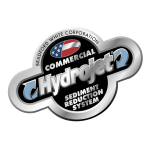In recent years, the air quality of Missoula, Montana has been up and down, but it is still not something to dismiss. According to data on the DEQ site, this year Missoula, MT’s air quality has been mostly graded as “good”, with the levels rising into the yellow moderate category often enough to remain concerned. The Missoula county site has said the current Missoula air quality forecast is overall good to moderate, which should not cause panic for Missoulians, however should not be ignored either.
Understanding the current state of air quality in your region is essential for protecting yourself and your loved ones against adverse health effects. We’ve taken it upon ourselves to give you the information in a detailed but simple manner, so you can feel safer doing all the activities you enjoy.
Air Quality in Missoula, MT
Two types of pollution are monitored by Missoula’s Air Quality Program: ozone and particle pollution. Ozone pollution refers to ground-level gas molecules, also called smog. This pollution has not been an area of concern for Missoula as it is in the “good” category. However, Missoula, MT’s air quality receives a lower passing score for particle pollution. With the air quality level at moderate, a slight health risk is presented to Missoulians, especially concerning this particle pollution from smoke. This is why it is crucial, now more than ever, to be aware of this and to take preventative caution in order to help maintain low levels of pollution.
The data for this city’s air quality includes data from Seeley Lake, which seems to be where most of the pollution is in the county. Seeley Lake is largely a forested area and the residents use mainly woodstoves, which is the main source of pollution in the area. This means that the air quality of Missoula, MT does not entirely originate from the city, even though it is affected. For more information on Seeley Lake click here.
Particle Pollution
Particle pollution is what has been a point of concern for the mountain city. This type of pollution is caused by fine particulate matter (PM) in the air. This matter is also known as PM2.5. Particulate matter is made of tiny air droplets that are 2.5 microns or less in width. Though these particles are invisible, they lead to hazy air, which is not only unhealthy but can be a visibility problem for drivers. Moreover, it has been linked to the cause of various health issues and worsening pre-existing health conditions.
The size of particulate matter (PM 2.5). Taken from the EPA web.
Particle pollution is not something to brush off, as we can easily and unintentionally contribute to higher levels of PM2.5 if we aren’t careful enough. This type of pollution originates from both indoor and outdoor activities. Some common outdoor activities are fuel-burning, such as wood, heating oil, forest fires, etc. Other common sources are cars, trucks, buses, and vehicle exhausts. Common indoor activities that contribute to this pollution are cooking, smoking, burning candles, and using fireplaces. The DEQ has a monitoring site called Today’s Air where you can check the current levels of PM2.5 to find out the air quality of Missoula, Montana, so you can control when you do these activities.
Health Effects
The health effects of Missoula, MT air quality are scored based on the Air Quality Index (AQI). The current state of Missoula’s air quality is good to moderate. Although the particle pollution is usually good and presents little to no risk, it sometimes rises to the moderate level where particle pollution may cause health effects for certain people.
The Air Quality Index (AQI). Taken from the AirNow website.
Not everyone will be affected by particle pollution at the current state of Missoula’s air quality, but it can affect anyone who is exposed to it, regardless of their health conditions. The people who are at the highest risk of being affected are infants, children, the elderly, smokers, people with lung disease, asthma, and COPD.
It is possible to feel the effects of exposure to particle pollution right away. Key things to look out for are eye, throat, nose or lung irritation, shortness of breath, coughing, and runny nose. These are some short-term effects that will signal that you’ve been exposed to poor air quality outdoors for too long. The long-term effects are very dangerous, as they can cause lung and heart diseases or worsen asthma. Short-term exposure may not seem so dangerous, however it causes a lot of problems. It has been linked to worsening asthma and increased hospitalization for asthma, and an increase in hospital visits for people who have COPD, other lung diseases, and heart conditions. Year-long exposure to this particle pollution can be very detrimental and cause asthma in children, slow lung function growth in children, and increase mortality from lung diseases. Learn more about the effects of particle pollution from the American Lung Association site.
10 Tips to Protect You and Your Family
Missoula’s air quality forecast presents potential harm to people. We need to be careful for the sake of ourselves and others as well as preventing future pollution concerns.
Here are some tips to remain careful:
- Check the air pollution forecasts as often as you can. Check Today’s Air site, as recommended by Missoula County. Knowing whether the pollution levels are unhealthy will determine if you need to take preventative caution that day. Especially if you are in the group of medically-vulnerable people, then checking the website for the pollution score is especially important for yourself.
- If you have asthma, lung or heart diseases, are a smoker, child, or elderly person, you should take extra precautions as you are most vulnerable. In this case, you should limit your exposure to the outdoors when pollution levels are higher.
- Avoid exercising outdoors when pollution levels are high. Try in-home exercise activities or go to the gym on these days.
- Avoid most kinds of outdoor activities when levels are high. Especially strenuous activities that may require more air intake puts you at higher risk for irritations and discomfort.
- If you live near high-traffic areas, then it’s best to limit your exposure to the outdoors as much as possible when levels are higher.
- Avoid burning. Wood stoves have been the primary source of pollution in the Seeley Lake area. The air quality in Missoula, MT is affected by the wood burning. This is not limited to woodstoves, as burning wood in fireplaces, lighting candles, incense, and burning trash all contribute to more particle pollution.
- Try to drive less on days that have higher levels of pollution, to reduce the amount of pollutants that enter the air. If you need to drive, then keep your windows up, to inhale less polluted air.
- Reduce your energy use at home all year round. When you reduce your electricity usage, it will improve Missoula’s air quality forecast.
- On a regular basis, try to get around by bike, walking, or carpooling.
- Even when you stay indoors to limit your exposure to air pollution, indoor environments do have some pollution particles, because you can’t completely prevent it from entering your house. Consider buying an air purifier, so that when you stay indoors to protect yourself, you can feel completely protected. Air purifiers take in particles that are bad and filter it out to circulate clean air.
Frequently Asked Questions
As you would limit your outdoor activities contributing to air pollution, it is likewise important to do the same for indoor activities. You should limit how much you burn wood or candles indoors. You should also consider eliminating your gas stove if you have one. In addition, consider investing in an air filtration system that will purify any bad air particles that come into your house.
When the air quality in Missoula, Montana is in the yellow category, you shouldn’t be afraid to step outside your house when you need to. Don’t be paranoid. Be aware. Keep in mind how long you are outside when the levels are higher, determine if where you’re going is a high-traffic area, and know what kinds of activities you should avoid on these days. Another important thing to keep in mind is your pre-existing health conditions. Knowing yourself and what you’re doing when you step out is vital.
– Stay indoors when you can. If you can invest in an air purifier, do so because you will feel better avoiding to inhale re-circulated polluted air.
– Try to limit hard-core physical activity. This includes exercising and doing strenuous work that requires more air intake, which is dangerous when the air quality in Missoula, MT is poorer than normal.
– Keep your windows closed when you’re driving if you need to leave the house. This will reduce your exposure to poor air quality.





